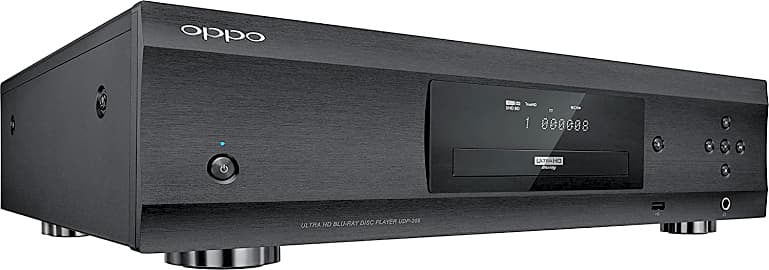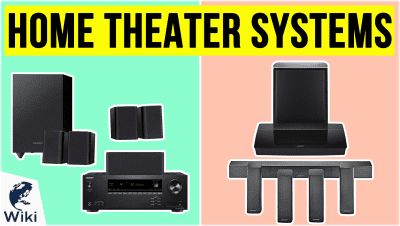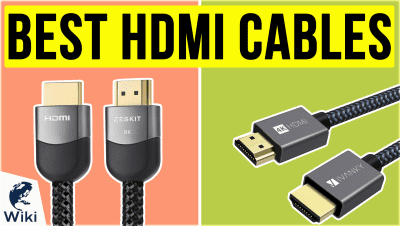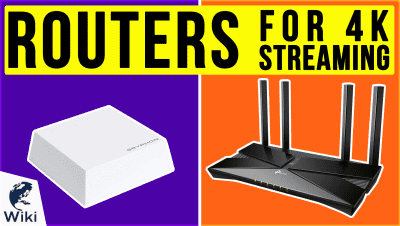The 7 Best WiFi DVD Players

This wiki has been updated 37 times since it was first published in February of 2016. No one enjoys running cables under baseboards, along ceilings, or through walls. Luckily, it's never been easier to use your home's Wi-Fi network to free yourself from a rat's nest of cords. We've selected some of the most affordable and best-performing wireless and smart DVD players, which are perfect for playing all kinds of audio and video discs, or even streaming your favorite apps. When users buy our independently chosen editorial choices, we may earn commissions to help fund the Wiki.
Editor's Notes
October 07, 2020:
While it seems like a lot of major companies are diverting resources away from these types of players and toward the hardware that supports a continuing cord-cutter revolution, some are still finding ways to innovate. The Sony UBP-X1100ES 4K, for example, is a model that continues to push the boundaries in terms of both video and audio performance. One of the cool things the company has done in this and the Sony UBP-X800M2 is to design a chassis that all but eliminates unit vibrations caused by the spinning of the disc or even the rumble of a subwoofer in your sound system, which can keep a potentially annoying rattling out of the experience.
For anyone looking for an all-in-one solution, the Xbox One X is still a fantastic choice. Now, we're only so many months removed from the release of their next generation of consoles, but if you don't want to wait or fork over the obscene cost that's being projected, this makes a wise selection. Of course, if budget is a primary concern, the Sony Streaming BDP-S3700 remains a viable choice. It can even stream in 4K, though it doesn't seem to be able to handle UHD Blu-rays.
May 10, 2019:
To say that this market category has stalled would be something of an understatement. We were able to find only a pair of new models worth including on our list, as more and more users are turning to streaming boxes to get their content fix. What's more, it seems that Panasonic has pretty much left the game entirely, offering no new models and rendering the last players they produced more or less unobtainable. The new units we did add come from Sony and LG, and the Sony model actually has a great streaming platform built in (as do some others on our list), so you could reasonably use it as your primary cord-cutting device, as well. Some other products were jettisoned due to age, but the total number of items wound up being reduced from 10 to eight, as there just aren't that many high-quality options on the market any more.
A Brief History Of Recorded Video
Reading and writing is much faster with digital media, and also thanks to their digital nature, they can utilize interactive menus and file structures.
It was just several short decades ago when adjusting the rabbit ears atop a bulky, wood-paneled monstrosity was the only way to get a good TV picture. Around the same time as color broadcast was separating itself from black and white, Charles Ginsberg was developing the first video recording technology at Ampex Corporation. Almost 20 years later, Sony would introduce their revolutionary videocassette recorder, or VCR, making video available to home users across the world.
VHS tapes were constructed much like audio cassettes. They consisted of a magnetically sensitive tape wrapped around two opposing reels. The tape was exposed between the two spools where a VCR's head unit would read it. The quality of this system's video and audio feeds was limited, as were its durability and lifespan. As electronics technology increased, analog video fell by the wayside and was eclipsed by the DVD around the turn of the 21st century.
DVDs claimed the video crown from VHS tapes for a few reasons. While magnetic tapes degrade somewhat quickly, physically imprinted optical storage lasts much longer. DVDs, unlike VHS tapes, also won't be damaged or erased by local electromagnetic wave sources like magnets or X-ray machines. Reading and writing is much faster with digital media, and also thanks to their digital nature, they can utilize interactive menus and file structures. On top of all that, DVDs are much cheaper to produce and distribute than most analog media.
From The Theater To The Wall
Despite their high-tech nature, the actual operation of optical digital media hearkens back to the earliest of sound reproduction machines, the phonograph. Instead of a needle sliding along a grooved surface and creating physical vibrations, however, optical storage is read by a laser moving across a track of printed depressions in the disc's written surface. This surface is made of a very thin sheet of aluminum pressed between layers of plastic and acrylic.
As wireless technology has progressed during its short life, it's been worked into a large number of home devices, and televisions are no exception.
Digital data is transmitted in binary, a number system that uses only 1s and 0s. CDs, DVDs, and Blu-rays are made with a series of microscopic laser-etched pits and lands in the aluminum. Consecutive, matching types of indentations (such as a pit following a pit) signify a zero, while a switch from pit to land or back denotes a one. As the disc spins above the laser, these 1s and 0s are sent to a controller in the drive and organized for delivery to a video processor.
At this point, home theater setup moves farther away from antiquated analog technology than ever. Even if you weren't around for the VCR craze, you've probably poked your head behind an entertainment center and been treated to a proverbial rat's nest of cables. This ubiquitous mess of cable has been a part of video and audio electronics since movies and television became such important American hobbies. After all, hardwired systems have been the most readily available since home electronics was born.
But corded setups do have drawbacks. Cables, themselves, can be prone to signal bleed and shorted connections. Troubleshooting a bad HDMI connection could mean crawling behind your big-screen TV and checking each individual plug. Speaking of maneuvering between an appliance and the wall, it's not always easy or even possible to snake a wire around a tight corner. And, in light of America's growing obsession with digital video, it's nearly unthinkable to distribute one high-definition video signal throughout an entire house using a series of HDMI cables and adapters.
In order to solve the widespread problem of cable clutter, it makes sense to look to another massively popular digital standard: wireless networks. Far removed from the first days of 802.11 protocol, Wi-Fi systems today are capable of transmitting gigabytes of information per second across varying ranges of frequencies. As wireless technology has progressed during its short life, it's been worked into a large number of home devices, and televisions are no exception.
Your Own, Personal Broadcast Network
As you might imagine, the act of transmitting high-definition video data through the airwaves isn't exactly simple. As with so many advanced technologies, there are a few different methods through which home devices pull signals from thin air. Most homes have a Wi-Fi router that they use to browse the internet. Some portable video players are set up to utilize these same home setups to deliver a video feed to any device on the network. Other units use proprietary broadcast languages to send video over the air to specifically paired devices.
Both of those types of wireless video players are restricted to the moderate speeds of home Wi-Fi.
Both of those types of wireless video players are restricted to the moderate speeds of home Wi-Fi. Because of the huge amount of bandwidth needed to accommodate a raw video feed, transmissions over standard wireless networks often use some kind of compression to make the files smaller. This is fine for most content, but the most visually intricate movies (or the pickiest videophiles) may require an uncompressed signal to be at their best.
To that end, you'll find a lot of options that use advanced wireless standards such as WiGig or Wireless HD. Because of the higher, 60GHz frequency used by these technologies (compared to the 2.4GHz and 5GHz ranges of standard Wi-Fi), there's far more room to fulfill the multiple-gigabit-per-second needs of lossless video. The drawback to these systems is that while they technically have longer potential range, their signals are extremely sensitive to physical interruption, meaning most of them require near line-of-sight visibility from the transmitting unit to the receiver.
Remember when buying video equipment that these technologies advance rapidly, so it's important to make a choice that you can continue to scale up in the future using better accompanying equipment. No matter what your choice, at least you won't have so many wires to plug in.












